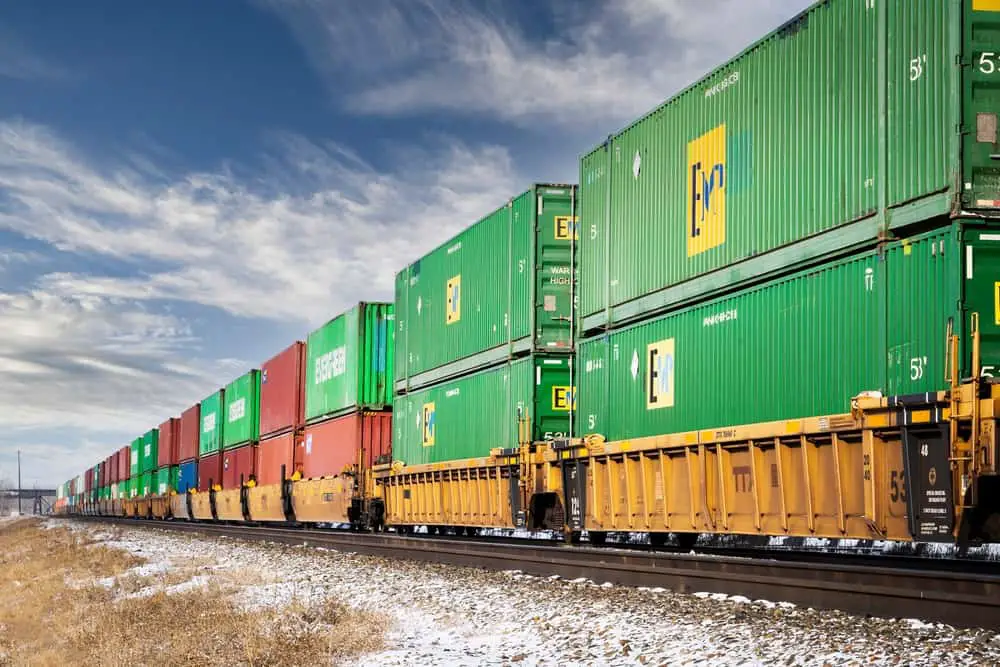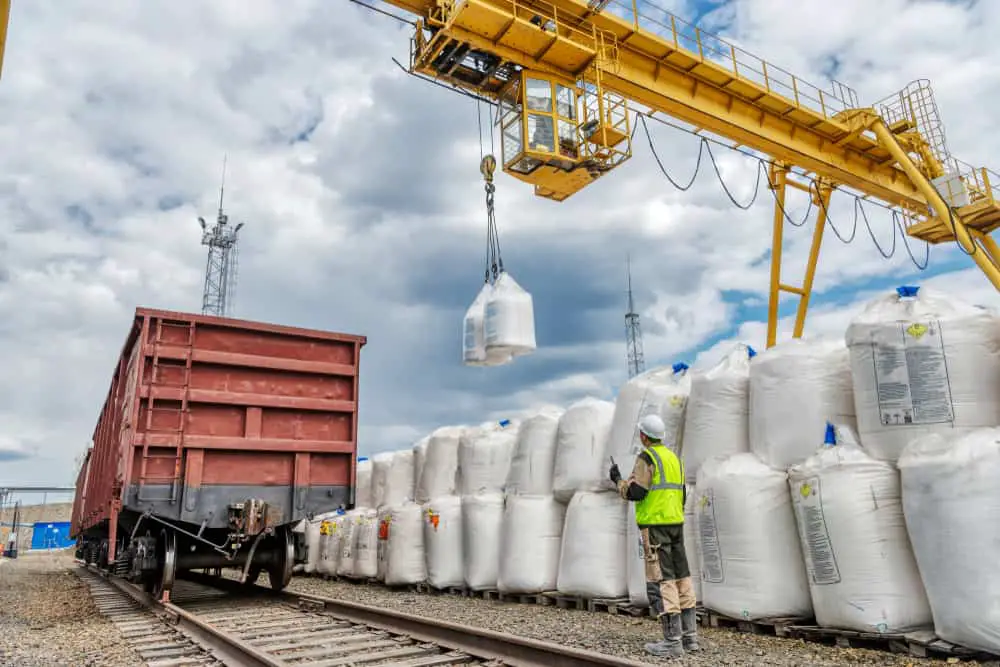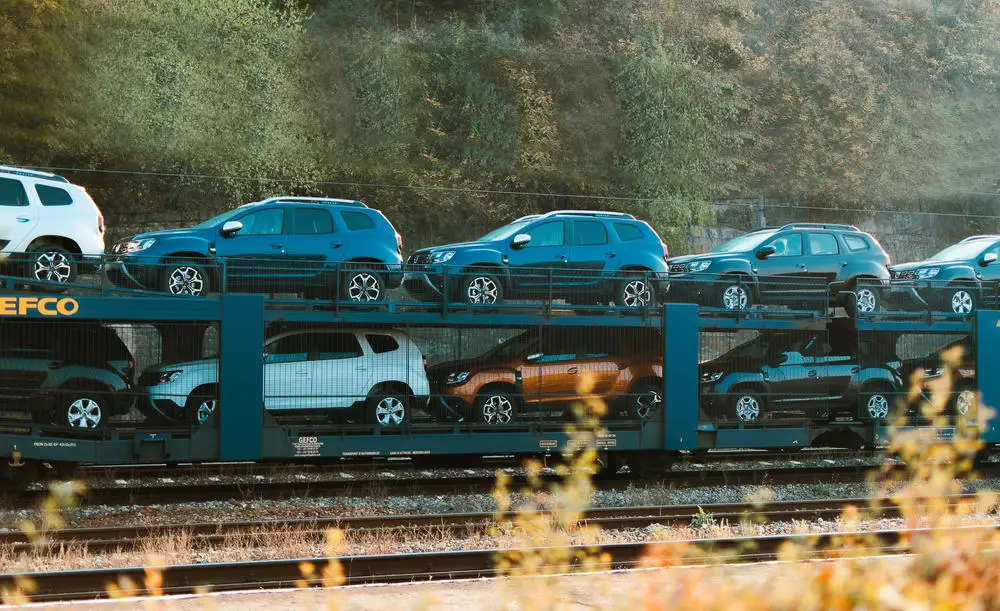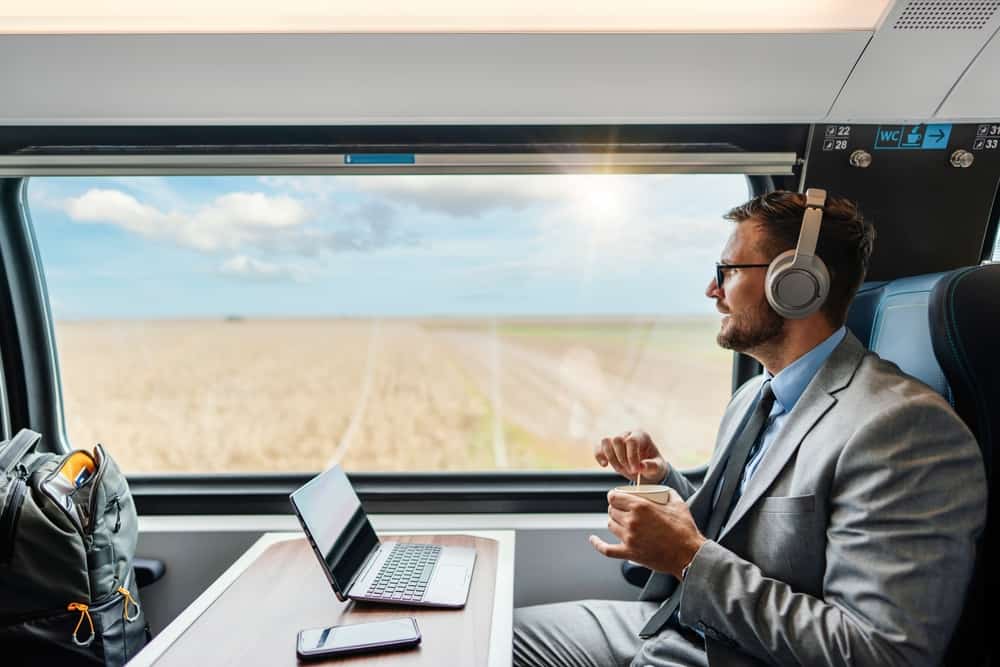
Trains are a vital part of transport infrastructure in almost every country. You may see them crisscrossing countries and wonder what they are transporting. So, what do trains carry?
Trains carry bulk cargo, food, cars, hazardous materials, and people. Trains are an efficient way of transporting goods and are highly versatile in terms of what they can transport. They are also typically much safer than other means of transport, especially when carrying hazardous goods.
Trains carry all sorts of things in a variety of ways. Different goods are transported in various types of train cars depending on how dangerous and/or perishable they are.
So, let’s look at what trains carry and how they do so.
Trains Carry Bulk Cargo

One of the primary purposes of railroad transport is to transport large quantities of heavy cargo. Different types of freight are carried on different types of train cars, depending on their makeup.
Bulk cargo that trains carry includes:
- Coal ore
- Iron ore
- Grain
- Sugar
- Stone
Hopper cars are typically used to transport large bulk cargo, and they are either open or closed on top.
Open hopper cars are used to transport things that can be exposed to the elements without affecting their integrity, such as coal. Closed hopper cars are used for things like sugar and grain that cannot get wet.
Hopper cars can be differentiated from other rail cars because they have doors on their bottom or side to help efficiently discharge the cargo.
This is usually done by using a rotary car dumper. A rotary car dumper holds the rail car and a section of the track together and then rotates it to pour out its contents. This fully automated process enables heavy goods to be easily removed from train cars.
How Do Trains Carry Cargo?
For non-bulk cargo, such as iron ore or coal ore, shipping containers have become the standard for railroad transport.
Most trains these days use standard shipping containers, also known as ISO Containers. There are ones you’ll typically see in ports, on the back of trucks, and sometimes used as storage units.
The reason for the use of shipping containers is standardization. By using something universal like shipping containers, transport vehicles can be designed to fit them.
This means there can be a seamless transition between transporting goods on trucks, trains, and cargo ships, as they are all designed to carry the same thing. This has helped overcome differences between different countries and made international shipping easier.
Trains Carry Food
Trains carry all sorts of food, both for humans and livestock. Trains also transport ingredients that can be turned into other food or consumable goods. These include wheat for bread, soybeans for tofu, and barley for beer.
Trains can transport perishable and non-perishable items. Non-perishable items can be easily transported in traditional containers as they do not need to be refrigerated.
However, if trains transport perishable goods like meat, fruit and vegetables (amongst other things), they must be appropriately refrigerated to ensure they do not perish.
Perishable goods are transported in refrigeration cars, which are also known as reefers. Over the years, refrigeration technology has continued to improve, making transporting perishable goods more efficient while reducing emissions.
Furthermore, cryogenic refrigeration is increasingly becoming more common; this involves freezing goods at extremely low temperatures.
Trains Carry Vehicles

Trains can carry small trucks and cars, and they typically do so on what is called an autorack or car transporter.
Autoracks look very similar to trucks you will see on highways that transport cars, although some are also enclosed, unlike the ones you’ll see on trucks. The reason for enclosing autoracks is to protect the cars from adverse weather conditions, theft, and vandalism.
Enclosed autoracks are typically made with steel sheets that cover them on all sides and generally have two levels for cars to sit. Autoracks were developed to replace boxcars initially used to transport automobiles when they were still being produced in low quantities.
However, boxcars soon became inefficient and even modifying them wasn’t proving to be effective, which is why autoracks were developed.
Trains generally transport newly manufactured vehicles from factories to consumers. However, in some cases, like Amtrak’s Auto Train, transport cars and their passengers (who sit in other carriages) across the United States.
Auto Train runs between Lorton, Virginia, and Sanford, Florida, and travels the 855 miles (1367 km) in 18 hours. It is a daily service designed to allow people to avoid driving long distances on the United States Eastern Seaboard.
Can Trains Carry Hazardous Cargo?
Trains carry all sorts of hazardous cargo. This includes things like ethanol, crude oil, fertilizer, and chlorine. While you might think it is dangerous for trains to carry hazardous substances, it is one of the safest ways to transport cargo of this nature.
According to the Association of American Railroads, 99.9% of all hazardous material transported on trains reaches its destination safely.
Furthermore, in the period between 1994 and 2005 (12 years), there were a total of 14 deaths in the United States as a result of hazardous material being released in train accidents. During this same period, there were 116 fatal accidents on highways due to the release of dangerous materials.
The lack of deaths is due to the rigorous efforts by shipping companies and governmental agencies to ensure that hazardous materials are shipped safely.
These include improved railway infrastructure and shipping containers, increased inspections and maintenance, and first-responder training. Hazardous materials are also now labeled very clearly to ensure that first responders know what they are dealing with when they reach the site of an accident.
Trains Carry People

Trains do carry people, and it’s almost always faster than driving the same distance by car.
There are different types of trains for different uses, which typically depend on the length of the journey, as the demands of passengers change as the distance increases.
For short, in-city trips, typically in the subway system, minimal seating will be provided, alongside plenty of standing room. This is because the trains cover relatively short distances, so passenger comfort is not prioritized.
For shortish day trips, trains usually just contain seats and no standing room. These types of trains are typically for long commutes in a country. As the journey is longer, there is an added emphasis on providing comfortable seating for passengers.
For long trips where the train travels the whole night, beds will be provided. Here, passengers will often book into cabins with beds that usually come with bedding.
These cabins may be shared, depending on the class of the cabin (i.e., first-class or something lower). The class will also dictate what food is provided and how fancy the cabin is, with first-class cabins being more spacious and comfortable.
Conclusion
Trains carry people, cars, food, heavy cargo, and hazardous materials. They are an efficient and vital part of transport infrastructure and provide much of the goods we need to run the world we live in.
